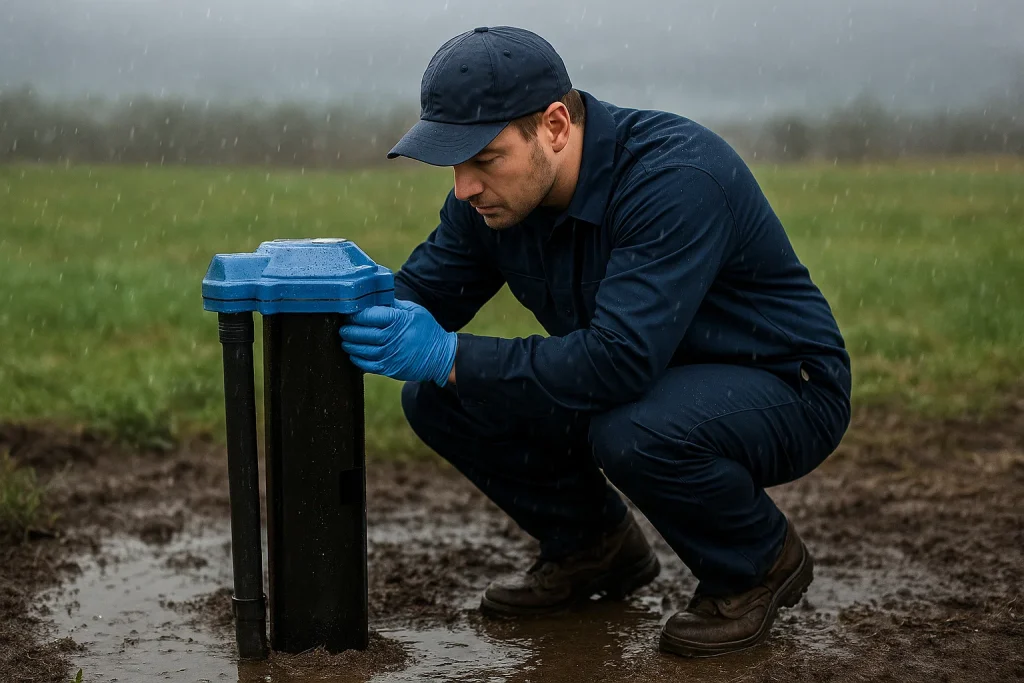If you rely on a private well for your water supply, you probably know the value of clean, dependable groundwater. But what happens when the skies open up and your area experiences heavy or prolonged rainfall? Especially if you have a newly drilled well, excessive rainwater can cause problems that aren’t always obvious—until it’s too late. Understanding how rainwater interacts with your well system is crucial for keeping your water safe and your investment protected.

Rainwater and Surface Contamination
One of the most significant concerns with excessive rain is the potential for surface runoff contamination. Rainwater doesn’t just soak into the ground—it runs across the surface, picking up bacteria, pesticides, fertilizers, and other pollutants from lawns, farms, and streets. If your well is not properly sealed or the surrounding area isn’t graded correctly, this contaminated runoff can seep into the well casing or even flow directly into the wellhead.
This is particularly risky for new wells where the soil around the borehole hasn’t settled completely. In these early stages, gaps or unstable ground may create easier pathways for pollutants to reach your water supply. Regular testing, especially after heavy storms, is crucial to ensure the water remains safe for use.
Changes in Water Quality
Even if contamination doesn’t occur, rain can still change the taste, smell, or appearance of your well water. Excessive rain may cause an increase in sediment, leading to cloudy or discolored water. Organic matter carried by rainwater can also alter the pH or introduce tannins, which might give your water an earthy taste or a yellowish tint.
If your well is shallow or sits close to the surface water table, it’s even more vulnerable to these changes. Installing appropriate filtration systems and scheduling regular inspections can help mitigate these quality fluctuations.
Increased Risk of Bacteria
A newly drilled well is more susceptible to bacterial contamination, especially from coliform bacteria and E. coli. These can be introduced through rainwater if the wellhead isn’t securely sealed or if surface water enters the system during storms.
Shock chlorination is often recommended after well construction, but it may need to be repeated if testing reveals bacterial presence after a significant rain event. It’s best practice to test for bacteria anytime your water changes color, odor, or clarity—especially after severe weather.
Well Structure and Drainage Issues
Heavy rain can compromise the physical integrity of your well site. Erosion, standing water, and improper drainage can lead to flooding around the wellhead, which increases the chances of water infiltration and system damage. The ground around your well should always be sloped away from the casing to encourage drainage, and any depressions or low spots should be filled and compacted.
Keep in mind that too little rainfall and your well can lose a substantial amount of water and even risk drying out!
While rainwater may seem like a harmless part of nature’s cycle, it can have serious consequences for your well, especially in its early days. Protecting your water supply starts with proper well construction, regular water testing, and awareness of how environmental conditions can impact your system. If you’ve recently drilled a well, now is the time to be vigilant and proactive. After all, clean water isn’t just a convenience—it’s a necessity.
Schedule an appointment with A&B Well Drilling & Pump Service. We make well water work for you!
